Agricultural Drone Common Sense
The use of drones in agriculture has gained significant attention in recent years due to their potential to revolutionize farming practices. Agricultural drone sprayers, also known as crop dusters, are unmanned aerial vehicles (UAVs) equipped with spraying equipment used to apply fertilizers, pesticides, and herbicides to crops. These agriculture uavs offer numerous benefits and are increasingly being adopted in modern agriculture. Here's a comprehensive look at agri spray drones and their use in farming.
What is an Agricultural Drone?
An agricultural drone is a specialized type of drone designed for spraying pesticides, herbicides, fertilizers, or other substances over agricultural fields. These agriculture spraying drones are equipped with tanks to carry the chemicals, and they use precision spraying technology to distribute the substances evenly over crops. Agricultural drones are used to improve the efficiency and effectiveness of spraying operations, reducing the need for manual labor and minimizing chemical wastage. They can also be equipped with sensors and cameras to monitor crop health and collect data for precision agriculture purposes. By analyzing this data, farmers can make informed decisions regarding irrigation, fertilization, and pest management, leading to optimized resource utilization and improved crop yields.
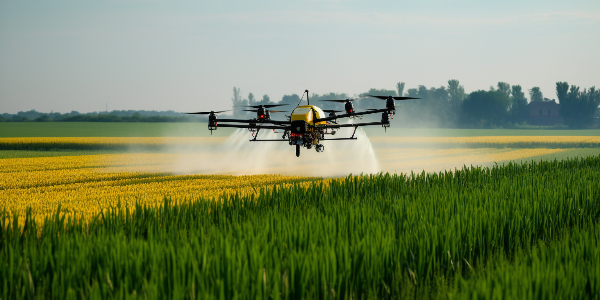
How Are Drones Used in Agriculture?
Drones are used in agriculture for various purposes, including crop monitoring, spraying fertilizers and pesticides, and precision agriculture. They provide farmers with valuable data and insights to optimize crop management practices. This data helps farmers make decisions about planting, irrigation, and other activities.
● Crop Spraying: Spray drones equipped with spraying equipment can apply fertilizers, pesticides, and herbicides to crops more precisely and efficiently than traditional ground-based methods. This reduces chemical use and minimizes exposure to farm workers.
● Crop Monitoring: Agriculture uavs equipped with cameras or multispectral sensors can monitor crop health by capturing images that show variations in plant health, water stress, and pest infestation. This data helps farmers make informed decisions about irrigation, fertilization, and pest control.
● Field Mapping: Ag Drones can create detailed, high-resolution maps of fields, including elevation, drainage, and soil variation. This information is valuable for planning seed planting patterns, optimizing irrigation, and managing land use.
● Precision Agriculture: By using agriculture spraying drones to collect data, farmers can practice precision agriculture, where inputs such as water, fertilizers, and pesticides are applied only where and when they are needed. This reduces waste, improves crop yields, and minimizes environmental impact.
● Livestock Monitoring: Aerial spraying drones can be used to monitor livestock, helping farmers keep track of their animals' health, behavior, and location. This information can lead to better animal welfare and more efficient herd management.
How Are Agricultural Drones Used in Crop Spraying?
Drone spraying involves flying the UAV over the field at a low altitude while spraying the crops with the desired chemicals. The agricultural drones are equipped with GPS and sensors to ensure accurate spraying and avoid overlapping areas. This technology offers advantages such as increased efficiency, precision, and reduced exposure to harmful chemicals for farmers. Various substances can be sprayed from drones, including pesticides to control pests, fertilizers to promote growth, and herbicides to manage weeds. The drone spraying method involves planning, calibration, loading, setting up a flight path, spraying the substances onto crops, monitoring the process, and analyzing the effectiveness of the treatment.
How Are Agricultural Drones Used in Crop Monitoring?
Agriculture drone monitoring involves using UAVs equipped with sensors and cameras to gather data and images from fields. These agri spray drones capture high-resolution images, create 3D maps, and analyze plant health using multispectral and thermal cameras. Farmers use this information to monitor crop health, detect diseases and pests, estimate yields, and optimize irrigation and fertilization practices. Agriculture spraying drones provide a cost-effective and efficient way to gather valuable information, helping farmers make informed decisions to improve their agricultural practices and increase crop yields.
How Are Agricultural Drones Used in Precision Agriculture?
A precision drone, or precision agriculture drone, is equipped with various sensors, such as multispectral, thermal, or LiDAR (Light Detection and Ranging), as well as high-resolution cameras and GPS systems, which can capture high-resolution images and collect data on crop health, soil conditions, and field topography, enabling farmers to make informed decisions. By analyzing this data, farmers can monitor crop health, identify areas of concern such as pest infestations or nutrient deficiencies, and optimize irrigation and fertilizer use. Precision spray drones also assist in crop scouting, planting, and yield estimation, ultimately improving agricultural efficiency, reducing costs, and minimizing environmental impact.
What Are the Types of Agriculture Spraying Drones?
There are several types of agricultural spraying drones, including multi-rotor drones and fixed-wing drones. Multi-rotor drones are more maneuverable and suitable for smaller fields, while fixed-wing drones can cover larger areas more efficiently. Each type of agriculture spraying drone has its own advantages and limitations, so the choice of drone depends on factors such as the size and shape of the field, the type of crops being sprayed, and the level of automation desired.
● Multi-Rotor Agricultural Drones
Multi-rotor ag drones , such as quadcopters and hexacopters, are a kind of UAV with multiple rotors (typically four, six or eight), which are popular in agriculture due to their maneuverability and stability. They are equipped with multiple rotors that allow them to hover in place, fly at low altitudes, and capture high-resolution imagery. Multi-rotor agriculture uavs are suitable for tasks that require close and contained object capture, such as monitoring crop health, detecting pests and diseases, and applying targeted treatments. Battery life is an issue with rotary drones, since power is drained more quickly due to the powering of multiple propellers. Flight times for many quadcopters range from 10-20 minutes, and can be less when flown during high wind speeds. As such, rotary drones are useful for smaller fields and scouting operations.
● Fixed-Wing Agricultural Drones
Fixed-wing ag drones have a wing-like structure and are designed to fly like airplanes. Fixed-wing drones have only one propeller and a rigid wing structure that persists in a fixed position throughout the flying. As a result, fixed wing drones have longer battery lives, with the potential to stay in the air for 20 minutes or longer. They are known for their long-flight endurance and ability to cover large areas. Fixed-wing ag drones are commonly used for mapping and surveying agricultural fields, as they can fly faster and cover more considerable distances. However, they require a runway for takeoff and landing, which can be a limitation in specific agricultural settings.
● Hybrid Agricultural Drones
Hybrid ag drones combine the features of multi-rotor and fixed-wing drones, offering both efficiency in covering large areas and maneuverability in navigating complex terrain. They can take off and land vertically like multi-rotor ag drones and then transition to fixed-wing flight for longer endurance and coverage. Hybrid ag drones are suitable for applications that require both close-range imaging and large-scale mapping, providing flexibility and versatility in agricultural operations. However, they also have some limitations that require careful consideration. One of the critical drawbacks is their high complexity and cost. They are more intricate and expensive than traditional UAVs since they need advanced flight control systems and additional components to support vertical takeoff and landing capabilities.
How to Choose Ag Spray Drones?
Choosing an agriculture spraying drone involves considering several key factors to ensure it meets your specific needs and requirements. Here are some important aspects to consider:
● Type of Sensors
Determine the type of sensors you need based on your specific agricultural applications. Common sensors include RGB, multispectral, hyperspectral, thermal, and LiDAR sensors, each providing unique data for crop monitoring and management.
◆ RGB Cameras – RGB (Red, Green, Blue) sensors, also known as standard or color cameras, are the most common type of sensor used in agriculture drones. While they may not provide the detailed spectral information of multispectral or hyperspectral sensors, RGB sensors are still valuable for capturing high-resolution color images of fields and crops. In fact, RGB sensors are usually a common and essential component of agriculture drones, providing valuable visual data for informed decision-making in crop management.
◆ Multispectral Cameras – Multispectral cameras have more than one lens, each with a different filter. These filters allow the lens to focus on selected wavelengths, including the near-infrared (NIR) and visual (VIS) spectrum. These sensors are commonly used in agriculture to assess crop health, monitor vegetation indices (like NDVI), and detect areas of stress or disease in crops. Multispectral sensors can provide valuable insights into plant health, nutrient status, and water stress.
◆ Hyperspectral Sensors: Hyperspectral sensors capture data in many more narrow and contiguous bands across the electromagnetic spectrum compared to multispectral sensors. This high spectral resolution allows for detailed analysis of materials and substances, enabling identification and characterization of specific plant species, stressors, and chemical compositions. Hyperspectral imaging is used in precision agriculture for detailed crop analysis, disease detection, and nutrient assessment.
◆ Thermal Cameras: Thermal sensors, also known as infrared (IR) sensors, measure the thermal radiation emitted by objects. In agriculture, thermal sensors are used to assess crop temperature, which can indicate stress levels, irrigation effectiveness, and plant health. Thermal imaging can help identify areas with water stress, pest infestations, or disease, allowing for targeted interventions and improved crop management.
◆ LiDAR: Light detection and ranging (LiDAR) uses lasers to create 3D maps and detect the distance of objects, enabling farmers to analyze topographical data, identify crop patterns, and plan for more efficient planting. These sensors are very accurate at mapping landscape elevations. They are also fairly expensive to deploy on agricultural drones. Elevation can also be measured with drones using overlapping images (also called photogrammetry), which could be done with a regular camera at lower cost, but with reduced accuracy when compared to LiDAR.
● Payload Capacity
To determine the payload capacity for your spraying requirements, consider the size of the area to be covered and the volume of liquid to be sprayed per flight. The payload capacity of a aerial spraying drone indicates the maximum weight it can carry, which is crucial if you intend to use it for spraying pesticides or fertilizers, which can be quite heavy. Ensure you select a agricultural drone with a payload capacity suitable for your particular needs.
● Spraying Efficiency
Choose agricultural drones with efficient spraying systems for uniform coverage and minimal drift. Look for adjustable flow rates, spray nozzles, and intelligent spraying systems. Consider the spray or spread function based on your crop type and farm needs. Drones with a spray function evenly apply pesticides or fertilizers with liquid or granular tanks and nozzles. For covering larger areas with dry materials like seeds or fertilizers, consider drones with a spread function. Some drones offer both functions for versatility. Ensure the drone provides even distribution and consistent coverage for effective applications.
● Flight Time and Range
When choosing an agricultural drone, consider its flight time, range, and connectivity. Flight time is how long it can fly before needing a recharge, important for covering large areas. Range and connectivity determine how far it can fly and how well it can communicate, crucial for monitoring remote areas. Choose a drone that meets these needs.
● Ease of Use and Maintenance
Take into account the agricultural drone's ease of operation and maintenance, which includes features such as automatic flight modes, convenient access to components for maintenance, and user-friendly software interfaces. Also, ensure that the drone is easy to use and maintain, with access to support and repair services when necessary. Additionally, consider the availability of replacement parts and accessories.
What Are the Advantages of Agriculture Spraying Drone?
Many countries worldwide, including the United States, China, Japan, Brazil, Australia, Canada, India, and various European nations, use drones for agricultural purposes. These agricultural drones are employed for tasks such as crop monitoring, pest management, yield optimization, precision agriculture, aerial photography, mapping, crop spraying, livestock management, and soil analysis. The use of drones in agriculture helps farmers improve efficiency, reduce costs, and increase yields by providing real-time data and insights into crop health, field conditions, and resource management.
● Precision and Efficiency: Agriculture uavs can precisely target areas that need spraying, reducing wastage of chemicals and ensuring even coverage. This precision leads to more efficient use of resources and cost savings.
● Accessibility: Agriculture uavs can access hard-to-reach or uneven terrain that is challenging for traditional spraying equipment, allowing for more thorough coverage of crops.
● Time-Saving: Agriculture uavs can cover large areas in a relatively short amount of time compared to manual spraying or even tractor-mounted sprayers, saving time and labor costs.
● Safety: By using Agriculture uavs, farmers can reduce their exposure to chemicals, as they do not need to be in close proximity to the spraying area. This can improve overall safety for farm workers.
● Environmental Benefits: Agriculture uavs can reduce chemical runoff and drift, which can occur with traditional spraying methods, leading to less environmental impact.
● Flexibility: Agriculture uavs can be easily deployed and repositioned, allowing for more flexible spraying schedules and adaptation to changing field conditions.
What Are the Disadvantages of Drone Spraying?
Drones have become increasingly popular in agriculture due to their ability to monitor crops, assess plant health, and even apply pesticides. However, several challenges still exist in their widespread adoption and use:
● Limited Payload Capacity: Most ag drones used for spraying have limited payload capacities compared to traditional sprayers, which can restrict the amount of pesticide or fertilizer that can be carried per flight.
● Flight Time: Drones have a limited flight time due to battery constraints, which can result in more time needed to cover a given area compared to traditional sprayers. Choosing a drone battery with high capacity and high energy density is crucial.
● Weather Conditions: Drones are sensitive to weather conditions such as wind, rain, and temperature, which can affect their ability to operate effectively and safely.
● Regulatory Challenges: Regulations regarding ag drone operations can be complex and vary from one jurisdiction to another, requiring operators to stay updated and comply with legal requirements.
● Skill and Training: Operating ag drones for spraying requires specific skills and training, which may be a barrier for some operators.
Limited Range: Drones typically have a limited range compared to traditional sprayers, which can restrict their use in large-scale agricultural operations.
Conclusion
In conclusion, agricultural drone sprayers are revolutionizing the way farmers manage their crops. With their ability to provide real-time data, precision application of inputs, and increased efficiency, these drones are helping farmers improve crop yields while reducing environmental impact. As a global leader in lipo drone battery cell manufacturing, Grepow offers professional customizable agricultural drone battery solutions to meet the needs of various farming applications. If you have any questions or needs, please feel free to contact us at info@grepow.com.
Related Articles:
How to Choose Li-ion Battery for Spray Drone?
Agricultural Drone Common Sense
Grepow Tattu 4.0 Smart Battery Solution for Agricultural Drones
Introducing the Tattu 3.5 and 4.0 Battery Series: Powering Heavy-Lifting Drones
How to Charge a Drone Battery?
Related Articles
-
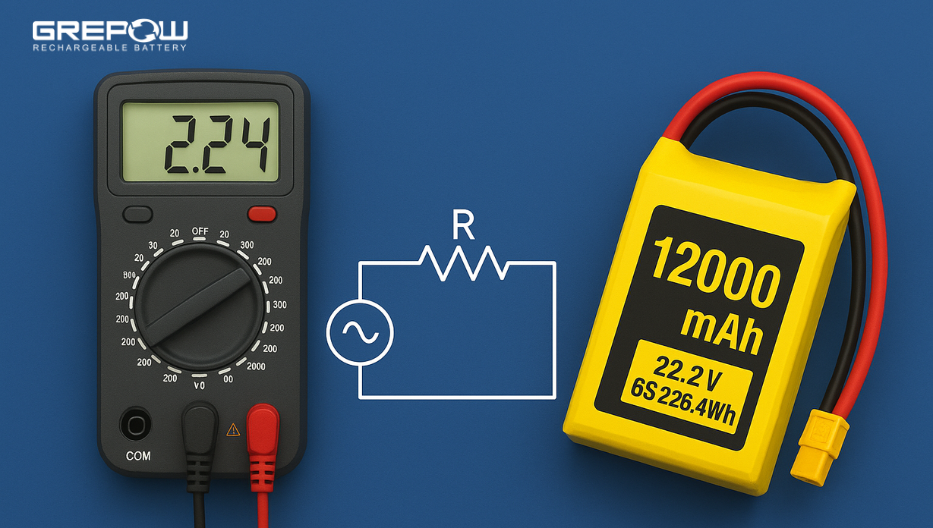
What Is The Internal Resistance of a Drone Battery?
2025-08-21 -
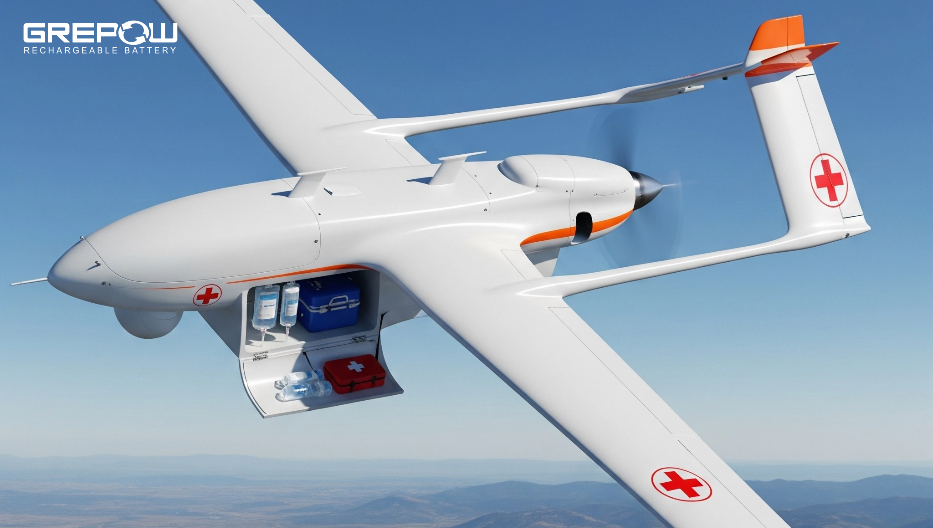
How to Choose Battery for Medical Transport Drones?
2025-08-20 -
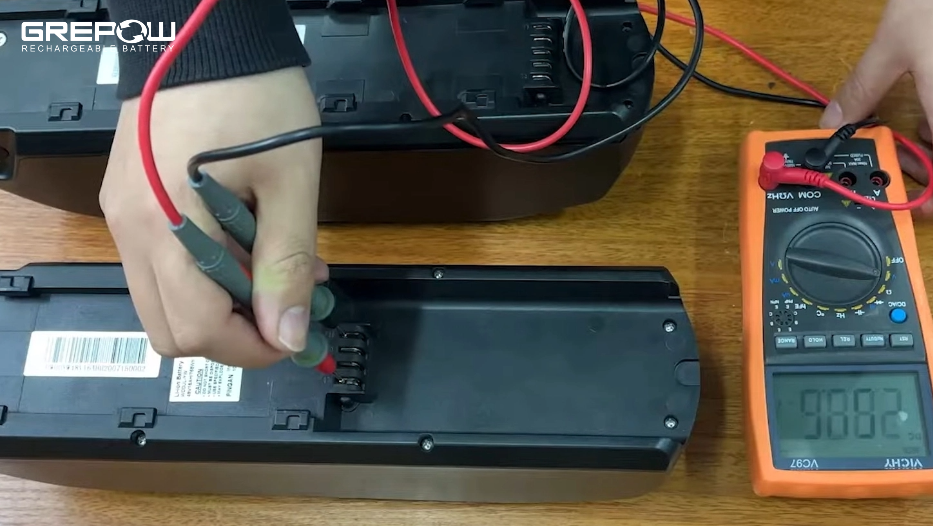
Comprehensive Drone Battery Troubleshooting Guide
2025-08-14
Related products
-
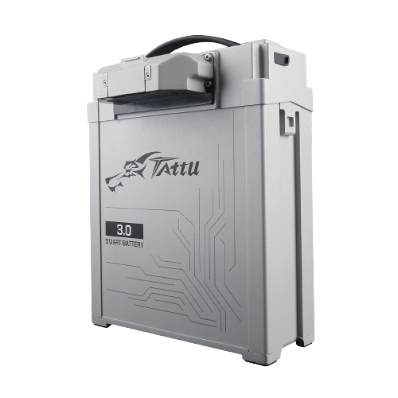
Tattu 3.0 14S 28000mAh 53.2V 25C HV Lipo Smart Drone Battery
-
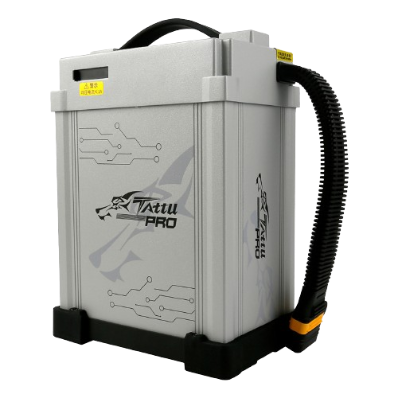
Tattu Pro 12S 22000mAh 44.4V 25C Lipo Smart Drone Battery
-
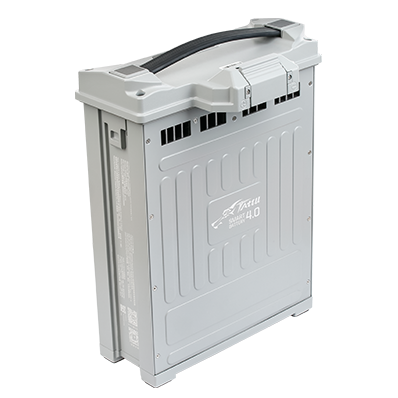
Tattu 4.0 14S 30Ah HV 35C 53.2V Lipo Smart Drone Battery
-
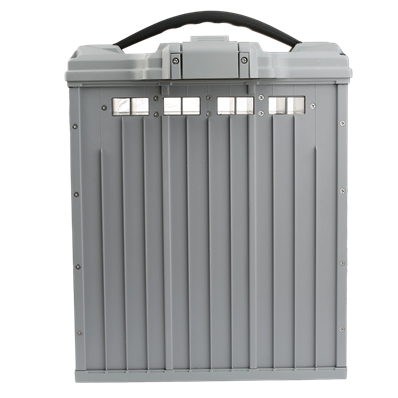
Tattu 4.0 18S Lipo 30Ah 68.4V Smart UAV Drone Battery
















































